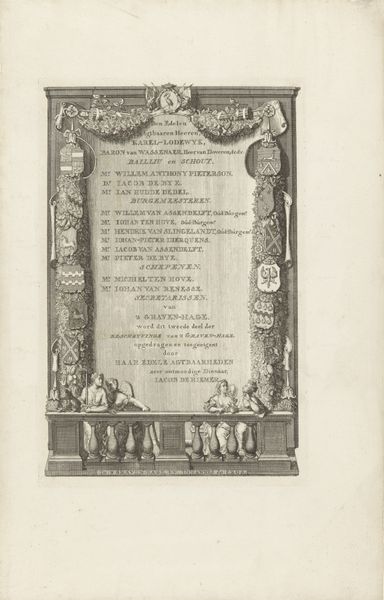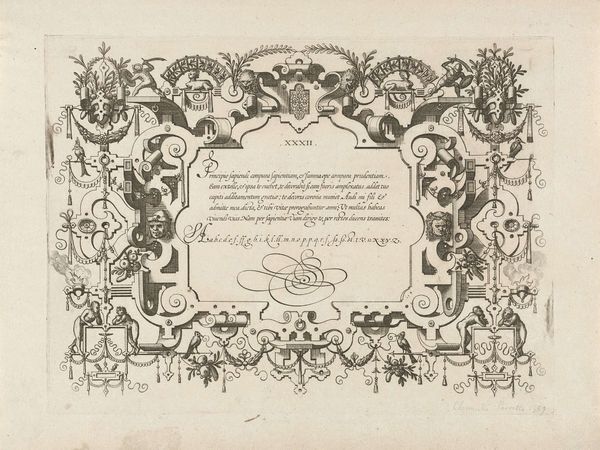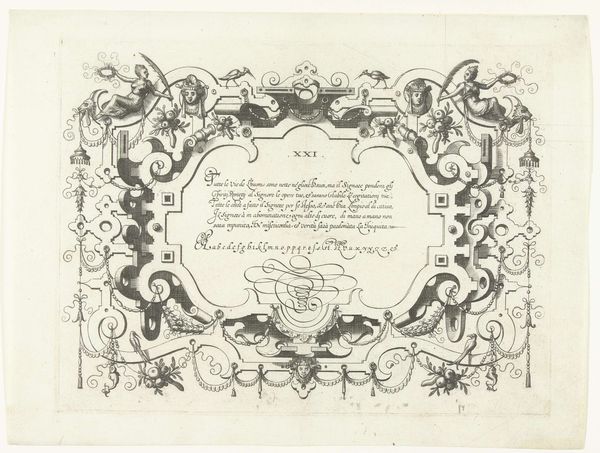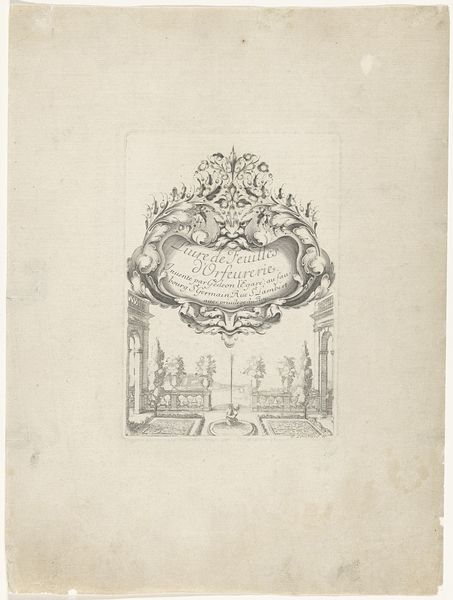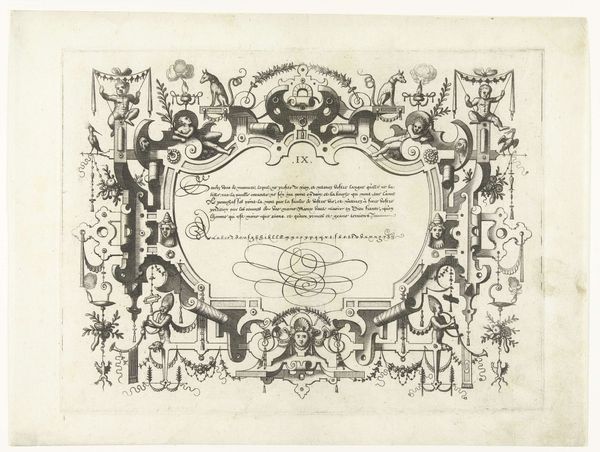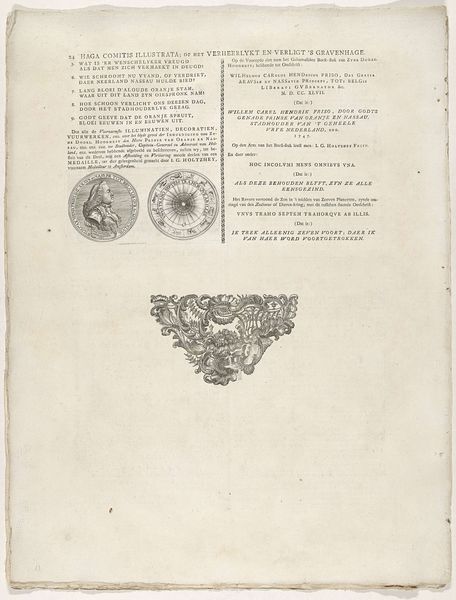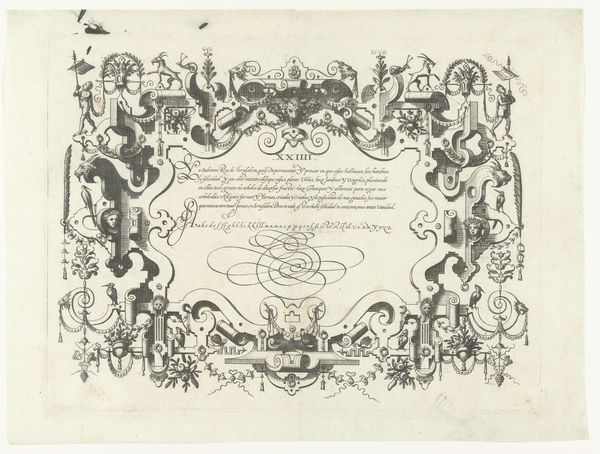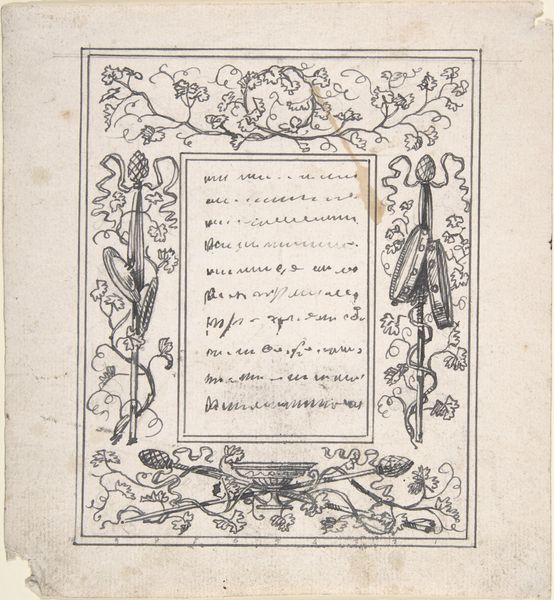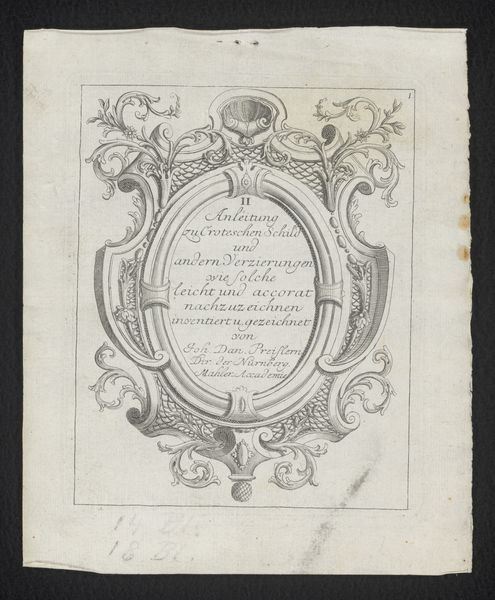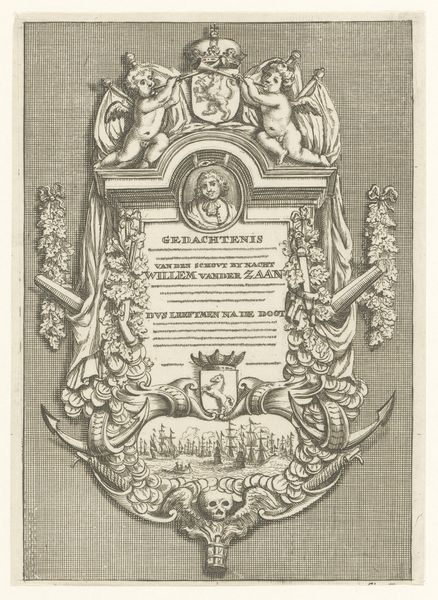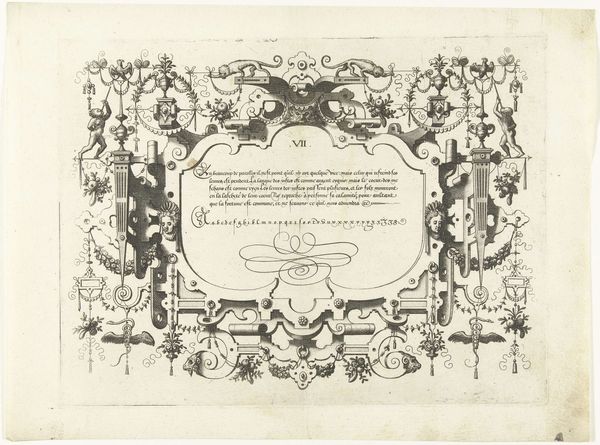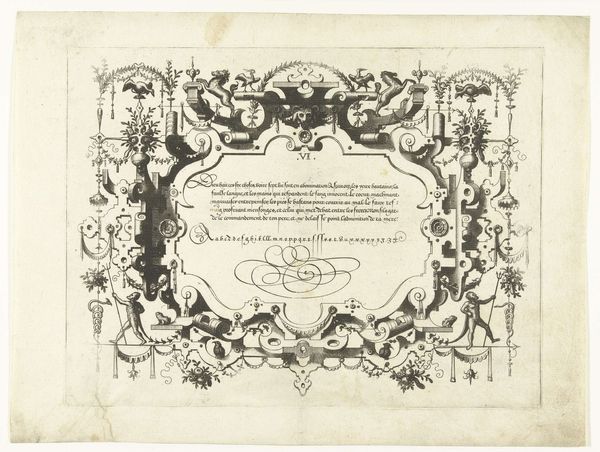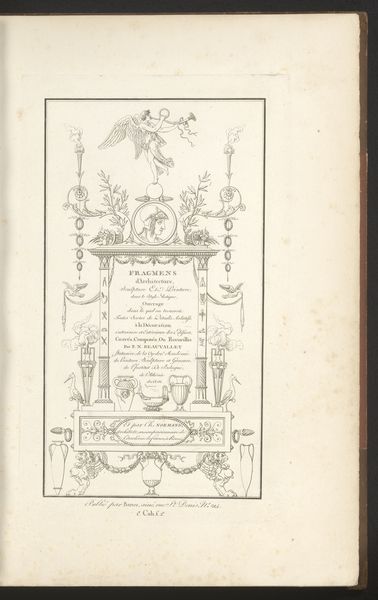
Dimensions: height 283 mm, width 196 mm, height 413 mm, width 257 mm
Copyright: Rijks Museum: Open Domain
Curator: "Opdracht met omlijsting met Minerva," a 1762 engraving by Noach van der Meer the Younger. What strikes you most about it? Editor: I’m interested in how this ornate, baroque style functions as an official record. It lists names of officials from Leyden. What was the function of this piece? Was it purely informational or something more? Curator: Good question! It’s an interesting intersection of civic duty and artistic expression. Remember, in this period, the lines between art, propaganda, and record-keeping were quite blurred. Prints like these, often commissioned by city councils, functioned to project an image of power, stability, and civic pride. Editor: So the baroque ornamentation isn’t just decorative; it reinforces this sense of power. Do you think the choice of Minerva at the top, the Roman goddess of wisdom and warfare, contributed to that message? Curator: Precisely! It’s carefully constructed visual rhetoric. Minerva symbolizes the city's wisdom in governance and its strength. Consider where this was displayed and who saw it. Was it meant to impress visiting dignitaries? Remind citizens of the power of their leaders? It could serve multiple purposes. What is not there also shapes the imagery. Are the public in the work? Editor: No, it's just the names and symbols of authority, right? Makes me wonder about accessibility, if the ornate presentation and symbolic language were meant for a select few. I didn't catch that point about multiple intended audiences. Curator: Thinking about who *isn't* represented in an artwork can often reveal just as much as what *is* there. This makes one appreciate how art and socio-political power operated during the 18th century.
Comments
No comments
Be the first to comment and join the conversation on the ultimate creative platform.
